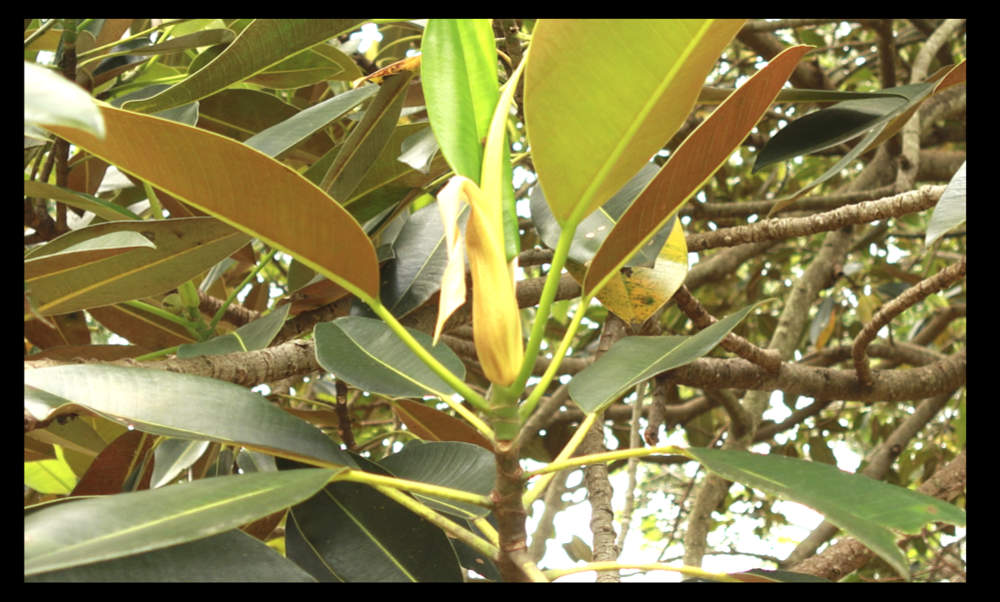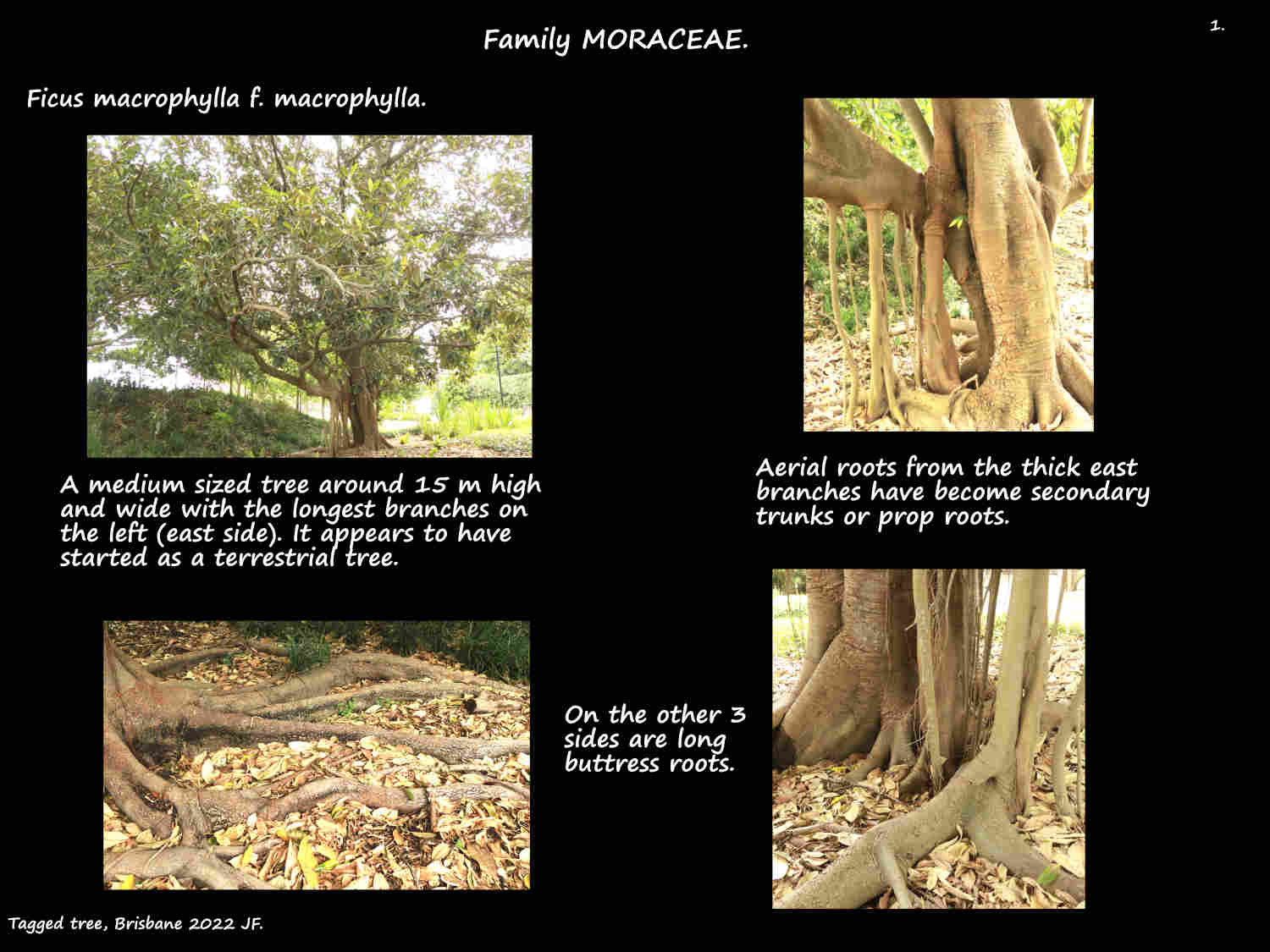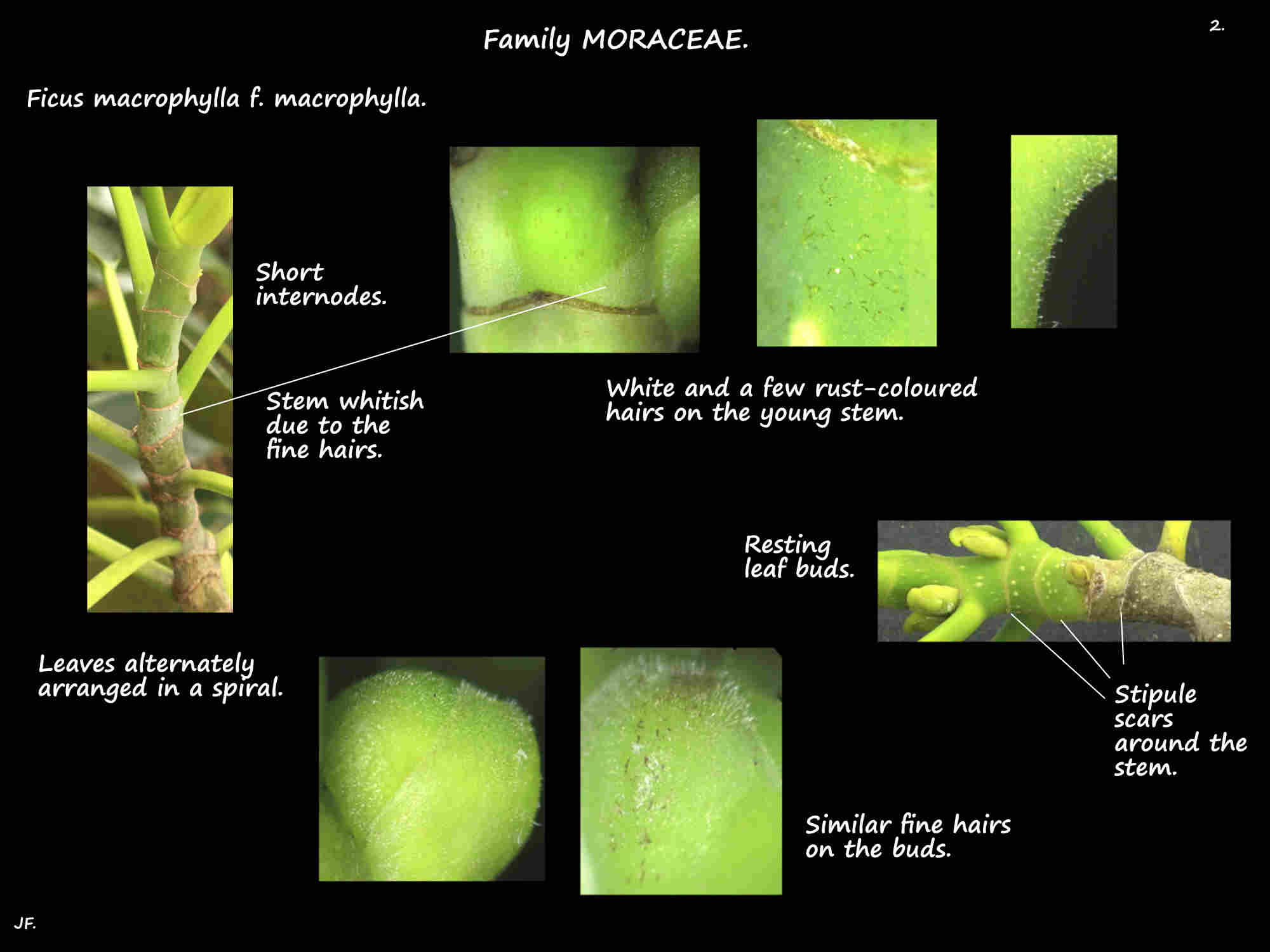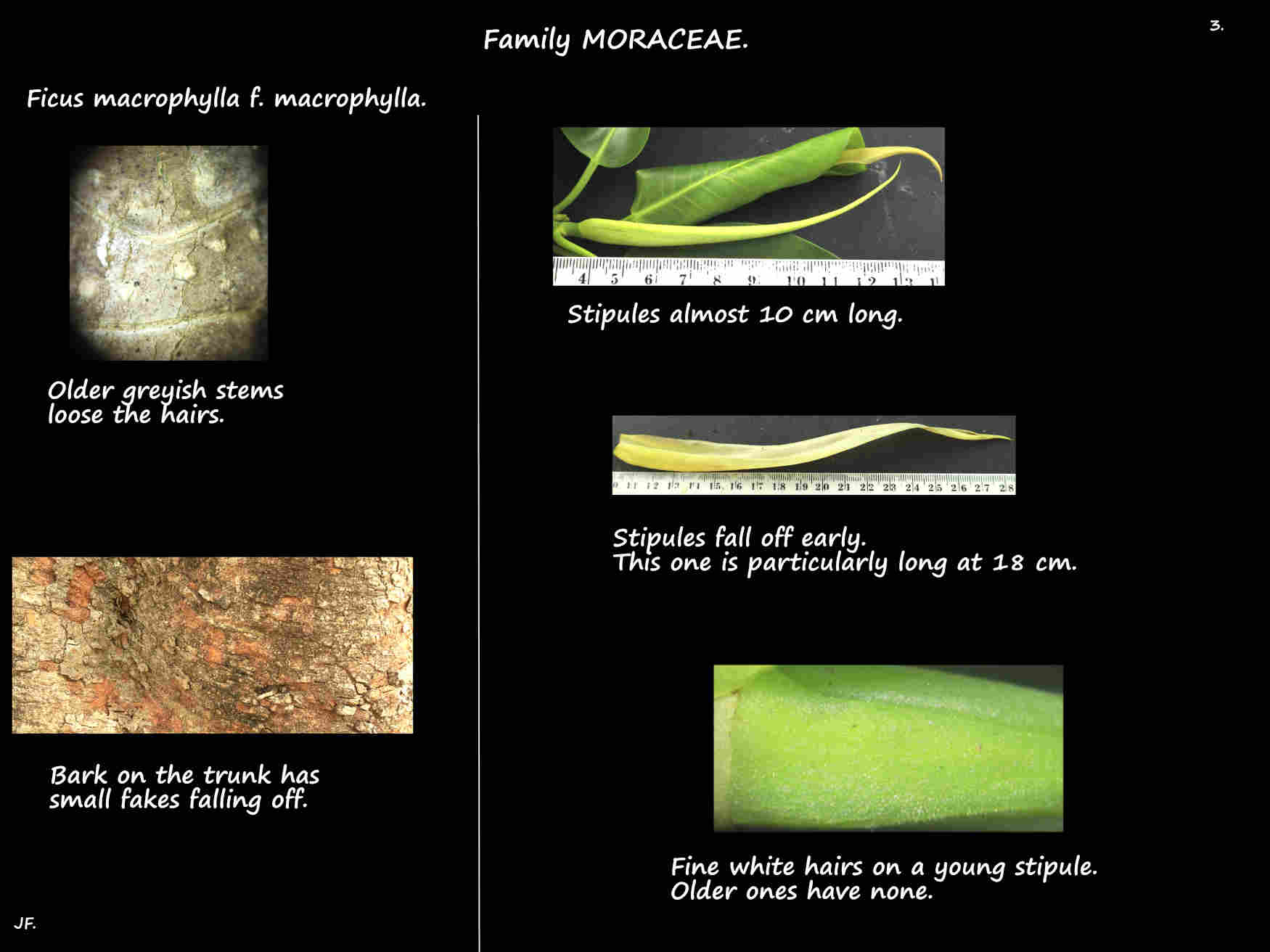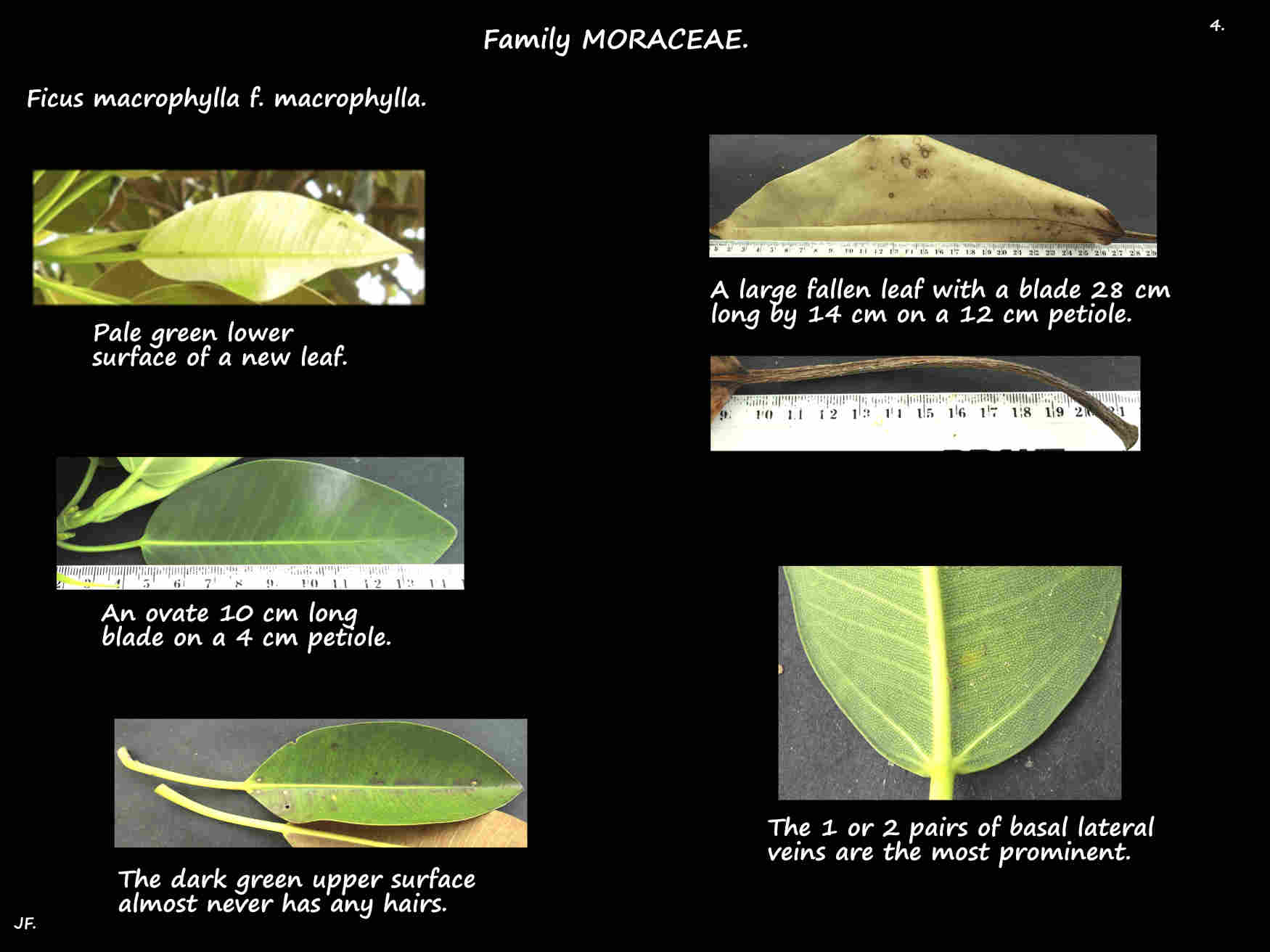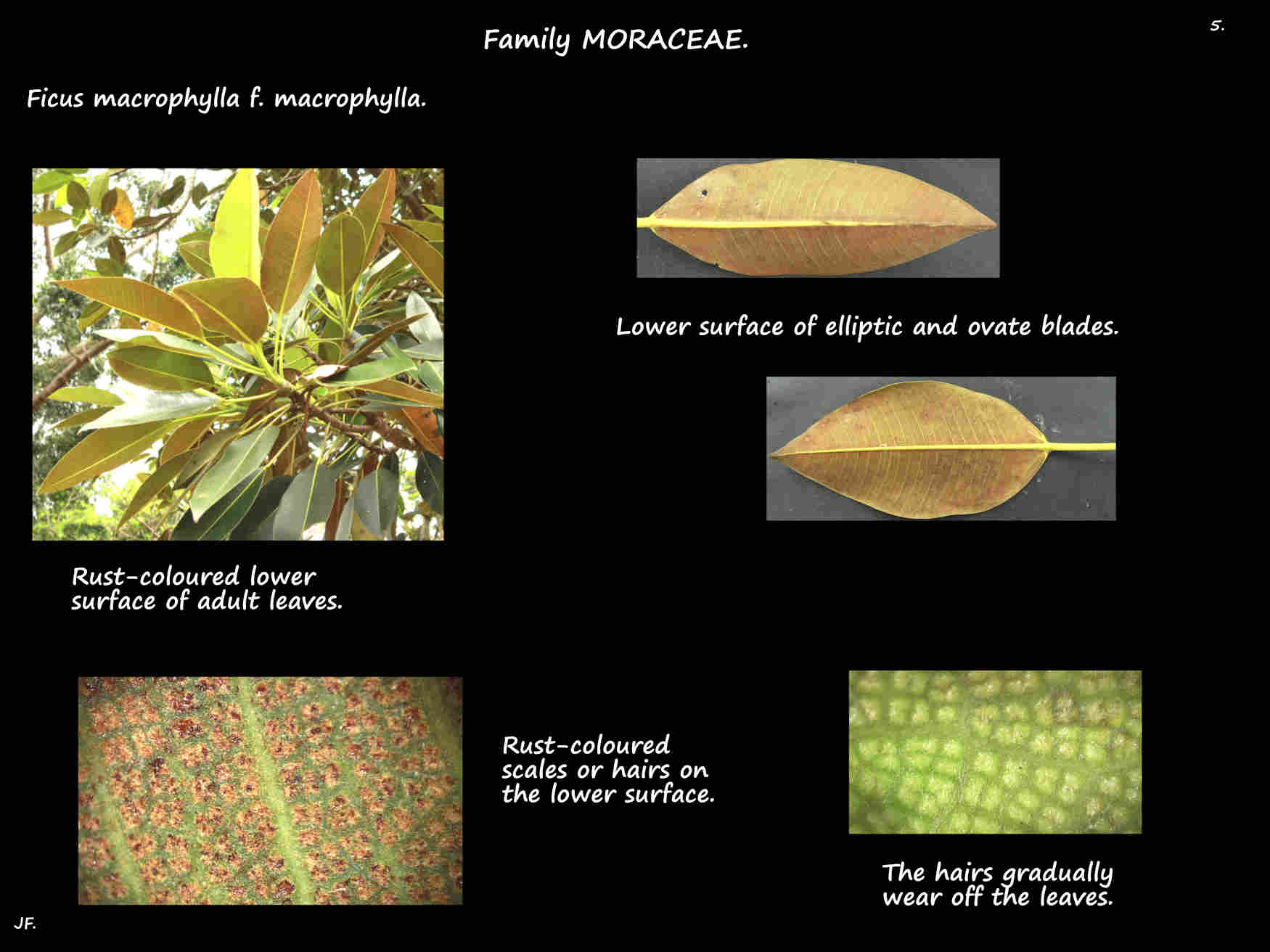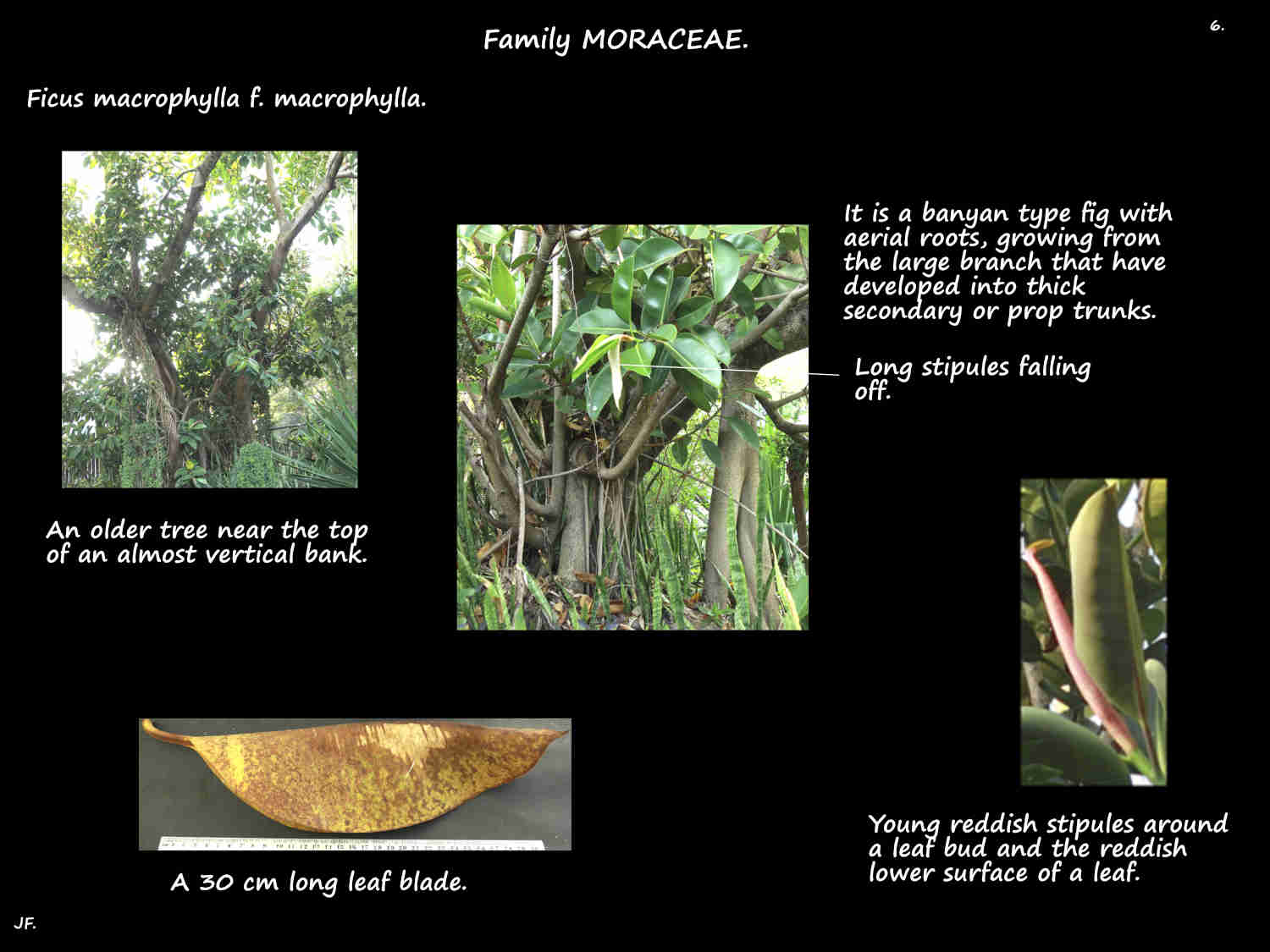Ficus macrophylla.
Family Moraceae > Genus Ficus > Subgenus Urostigma.
Moreton Bay fig or Australian banyan is native to Queensland and N.S.W.
Because of their size they are usually only seen in large parks and gardens.
Seeds can germinate on the ground, on rocks or most commonly on another tree.
On the ground they begin with a single trunk but can later develop prop roots.
As an epiphyte the aerial roots eventually reach the ground and develop into trunks.
These trunks can partially fuse forming a network around the host trunk and strangling it.
The host gradually rots away leaving a hollow in the centre of the now self-supporting fig.
Very old trees can be 50 or 60 m high but most seen in parks etc. are up to 20 or 30 m.
The trunk has rough grey-brown bark that sometimes flakes.
As the trees get larger the buttress roots grow longer and become much thicker.
The branches are erect to widely spreading and sometimes supported by prop roots that develop from aerial roots.
This is particularly so in the Lord Howe Isl. form, F macrophylla f. columnaris.
Young green stems have very fine pale and rust-coloured hairs but these are lost on older grey stems.
The distance between the nodes is short and there are scars from fallen stipules.
Damaged stems and petioles drip a lot of white latex.
The alternately arranged leaves are on grooved petioles up to 10 or 15 cm long on the largest leaves.
Petioles and the light green resting leaf buds may have fine pale and rust-coloured hairs.
The 2 green stipules protecting each new leaf are up to 15 cm long.
Initially covered in fine hairs these are lost before the stipules fall off.
Leaves are over 10 cm long and can be up to 25 or 30 cm long and 12 cm wide.
The blade is elliptic, ovate or oblong with a rounded tip or a short wide point.
The base is rounded, the edge smooth and the texture leathery.
Very young leaves are green and hairless on both surfaces.
Older leaves are dotted underneath with rust-coloured hairs or scales while the upper surface very rarely has any hairs.
The midrib is pale and may be slightly reddish on the upper surface.
The largest leaves can have up to 70 pairs of lateral veins with the basal 1 or 2 pairs more prominent.
The single or paired axillary inflorescences are syconia with the tiny flowers on the inside of a hollow receptacle.
The thick stalk or peduncle, up to 2.5 cm long widens at the top where there are 2 wide round tipped basal bracts.
The bracts, with hairs similar to other parts soon fall off.
The green syconia are round to pear-shaped and up to 2.5 cm when fully grown.
The slightly raised apical opening or ostiole has 3 small bracts over it.
Young syconia may have a few small hairs.
Each syconium has male, female and sterile female or gall flowers.
Male flowers, on a short stalk or pedicel are spread among the other flowers.
They have 3 or 4 perianth segments or calyx lobes and a single stamen.
Female flowers, with 3 or 4 perianth segments are partly sunken into the wall.
They have an ovoid ovary with a long slightly lateral style with a simple stigma.
Gall flowers, on a short or no stalk have a short style.
The pollinating wasp lays her eggs in the gall flowers.
Mature fruit are orange, reddish-brown then purple figs with pale yellow-green spots.
J.F.
